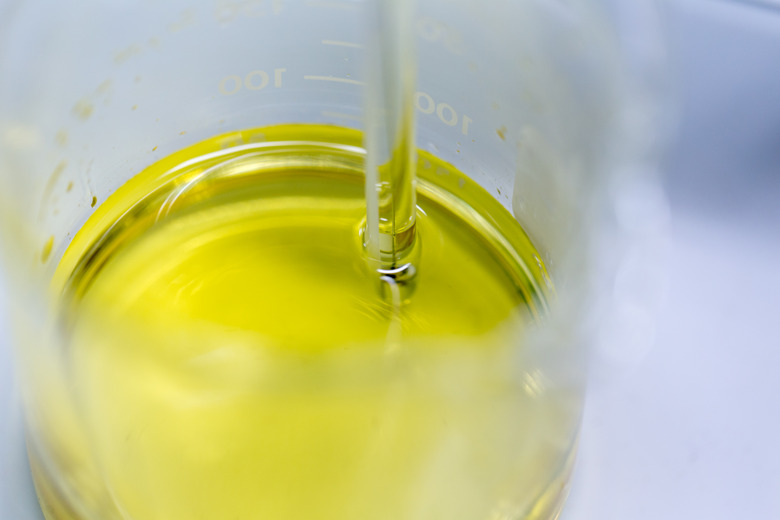What Are The Polymers Of Lipids?
Lipids create a unique type of polymer, known for being a key component of cell membranes and hormones. Where most polymers are long chains of identical, repeating carbon-containing molecules known as monomers, lipid polymers contain an additional, nonidentical molecule attached to each monomer chain. This molecule varies with the type of lipid: some may fall within a carboxyl group, a glycerol group or a phospate group. Some lipids also form polymer-like structures with another type of fat molecule, as in the case of steroids like cholesterol — but these are not considered true polymers.
Lipid Characteristics
The primary characteristic that all lipid molecules share is that they don't dissolve in water. This makes lipids critical for building structures that must maintain their shape when surrounded by liquid, such as cell membranes. This is also why lipids are a key component of hormones — chemical messengers that must travel through a liquid medium. Their strong molecular bonds make lipids convenient for long-term energy storage. Lipid molecules are given their insolubility because they are formed with ester bonds: they are compounds formed from an alcohol and acid by the removal of a hydrogen atom in a water molecule.
Carboxyl Groups
When a long chain of bonded carbon atoms attaches to a carboxyl group, it's called a fatty acid. This is the simplest type of lipid polymer. A carboxyl group consists of a carbon atom that forms a double bond with a single oxygen atom and a single bond with an oxygen atom that's bonded to another carbon atom. These chains make up the saturated and unsaturated fats found in plant and animal foods.
Glycerols
Fatty acids form more complex lipid polymers called triglycerides, triacylglycerols or triacylglycerides when each single-bonded oxygen molecule bonds to a carbon that's part of a glycerol molecule. Glycerol is a simple alcohol composed of three oxygen atoms and three carbon atoms that bond with hydrogen atoms eight times. Triglycerides are also commonly found in foods, especially animal products.
Phosphate Groups
When a triglyceride replaces one fatty acid chain with a phosphate group, it forms a phospholipid. Phosphate groups are made of a phosphorus atom bonded to oxygen atoms. Phospholipids form a characteristic bilayer structure, with water-repellent, or hydrophobic, layers sandwiching a water-permeable, or hydrophilic, middle. They're the primary component of cellular and intracellular membranes.
Fake Polymers
Steroids such as cholesterol, used by the human body to produce hormones and other major components of the nervous system, are not considered true polymers. While they are lipid molecules, incapable of being dissolved in water, their bonds form a ring, fused with carbon, rather than a chain. They are distinct from other lipid molecules because they can bond with but do not contain a fatty acid.
Cite This Article
MLA
Libal, Angela. "What Are The Polymers Of Lipids?" sciencing.com, https://www.sciencing.com/polymers-lipids-6404017/. 26 April 2018.
APA
Libal, Angela. (2018, April 26). What Are The Polymers Of Lipids?. sciencing.com. Retrieved from https://www.sciencing.com/polymers-lipids-6404017/
Chicago
Libal, Angela. What Are The Polymers Of Lipids? last modified March 24, 2022. https://www.sciencing.com/polymers-lipids-6404017/
